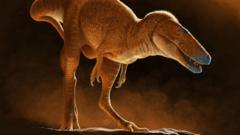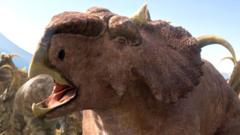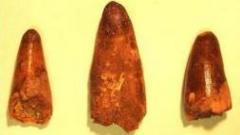Researchers have uncovered a new dinosaur species dubbed Khankhuuluu mongoliensis, which could reshape our understanding of tyrannosaurs' evolutionary history and their transition from small predators to colossal hunters like T.rex.
New Dinosaur Discovery Challenges Tyrannosaur Evolutionary Theory

New Dinosaur Discovery Challenges Tyrannosaur Evolutionary Theory
Khankhuuluu mongoliensis, a newly identified species, may change our understanding of the tyrannosaur lineage.
Scientists have unveiled an astonishing new species of dinosaur that could drastically alter the evolutionary narrative of the tyrannosaurs. Discovered in a Mongolian museum, the fossils of this newly named species, Khankhuuluu mongoliensis—meaning Dragon Prince of Mongolia—are believed to belong to the closest known ancestor of the notorious T. rex and its relatives.
The study, published in the prominent journal Nature, suggests that these fossils, dating back approximately 86 million years, provide insights into the transformation of tyrannosaurs from small, fleet-footed predators to the dominant carnivores terrorizing North America and Asia during the reign of the dinosaurs. Lead researcher PhD student Jared Voris, alongside Prof. Darla Zelenitsky from the University of Calgary, presents Khankhuuluu as not only a significant addition to the tyrannosaur family tree but also a transitional figure in the lineage’s development.
According to Zelenitsky, the term 'Prince' refers to Khankhuuluu being a smaller early tyrannosauroid as opposed to the commanding giants we often associate with the tyrannosaur family today. "The first tyrannosauroids were indeed tiny," Voris indicated, "they inhabited the periphery of larger predatory dinosaurs." The discovery highlights the intricate evolutionary shift that occurred, marking the transition from these diminutive dinosaurs to dominant predators like T.rex.
Weighing around 750 kilograms, Khankhuuluu is deemed a transitional fossil that bridges the gap between these smaller ancestral forms and their powerful descendants. The new species displays early evolutionary features that eventually contributed to the tyrannosaurs’ notorious hunting capabilities, including significant advancements in skull anatomy allowing for powerful bite forces. According to Voris, variations in the nasal bone structure observed in Khankhuuluu allowed later tyrannosaurs to develop the ability to crush bone and hunt larger prey effectively.
The fossils under examination were unearthed in Mongolia during the 1970s and were initially categorized as belonging to Alectrosaurus. However, through Voris’ research, the defining traits indicative of a new species became apparent. "Receiving a text from him stating that he believed it to be a new species was a moment of considerable excitement," remarked Zelenitsky.
This discovery not only provides vital information about the evolutionary trajectory of tyrannosaurs but also illuminates their capacity to migrate between North America and Asia via ancient land bridges, further influencing their evolutionary journey over eons. This research uncovers the evolution of these mighty creatures, illustrating how the once humble ancestors of T.rex became the powerful rulers of their ecosystem. As Zelenitsky aptly put it, "Before tyrannosaurs became the kings, they were princes."










